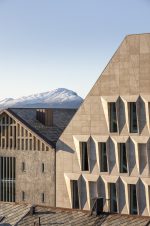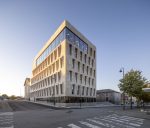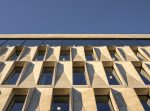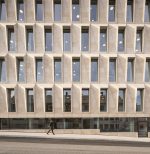Constructed in the heart of Bodø, Norway, a new town hall designed by Atelier Lorentzen Langkilde (ALL) delivers a contemporary interpretation of masonry to weave together an integrated civic center. ALL was awarded the 130,000-square-foot project following an international competition in 2013 and opened the renewed town hall in 2019. The result is a compelling gesture of shifting mass according to the architectural era; a forceful intervention softened by deftly planned facade planes and details.
Located just north of the Arctic Circle, Bodø is the largest metropolitan center in Nordland county, a sparsely populated region geographically defined by numerous fjords and fjells. The bulk of the town’s architectural stock dates from after the Second World War—its status as an Allied harbor led to significant destruction by the Luftwaffe. However, the preexisting town hall and adjacent bank building, built in the austere style of Nordic Classicism, survived the war and served at the primary point of reference for ALL’s intervention.
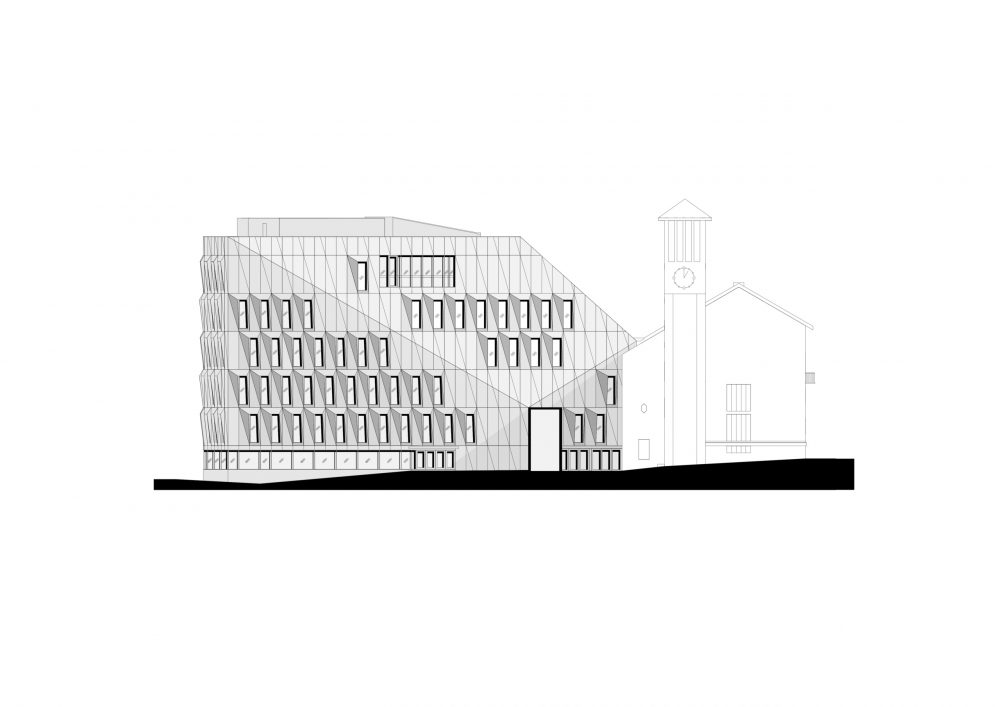
The project rises to six stories and reduces any potential omnipresence of its massing with a planar facade corresponding to the sloping rooflines of surrounding buildings. ALL’s intent to embed the town hall within the context is furthered through their use of limestone cladding—the rectangular panels largely measure approximately eight by thirteen feet and are divided by a rectilinear grid and diagonal seams.
Franken-Schotter, a German manufacturer, supplied the stone from their quarry in the Jura region; one of the oldest limestone-producing regions in Europe known for its high-density blocks with a breadth of colors and fossilization. According to ALL founding partner Kasper Lorentzen, “the Jura Gelb polished natural stone has a beautiful light brown color with rich ornamentation linking the appearances of the old city hall and bank into one coherent ensemble of new and old buildings.”
Following the selection of stone, ALL developed extensive drawn and 3D models of the facade, and collaborated closely with fabricators HS Hansen and Skandek A/S to layout the angle of cuts and the rain screen system. Each panel is hung from the above concrete floor slab with adjustable horizontal and vertical brackets to allow for adjustments and precise mounting on-site.
The planar character of the massing is translated as a stylistic motif across the facade in the form of angular and deep-set window openings. Through their ridged character of concavities and convexities, the window openings display an alluring play of light and shadow—and, in their lengthy and slender casements, are a lighthearted historicist reference to Medieval battlements.
All three buildings are tied together at the center of the urban block; the primary shared circulation area is a multi-storied atrium with Piranesian staggered walkways and elevated walkways clad in light ash wood.


